Overview
The BaroVUE™10 is a highly accurate barometer that can measure pressures over a range of 500 to 1100 hPa and can be used in a range of applications that includes meteorology and hydrology. This sensor includes our zero downtime recalibration. Other sensors on the market need to be taken offline and sent back to the manufacturer to be recalibrated, often for weeks at a time, causing a loss in valuable data and time, as well as an additional expense.
The sensor card for the BaroVUE™10 is pre-calibrated. Replacement sensor cards are also pre-calibrated, requiring only one trip to the field station and no downtime. The design of the BaroVUE™10 allows you to remove and replace your sensor card quickly and easily without either having to disassemble the equipment in the enclosure or having to send the equipment back to the manufacturer.
Read MoreBenefits and Features
- Highly reliable measurements (multiple cells)
- Direct-to-digital measurements
- Very low noise
- Integrated identification and diagnostics
- Zero downtime/recalibration
- Easy firmware updates
- Cost effective
- SDI-12 device
Images
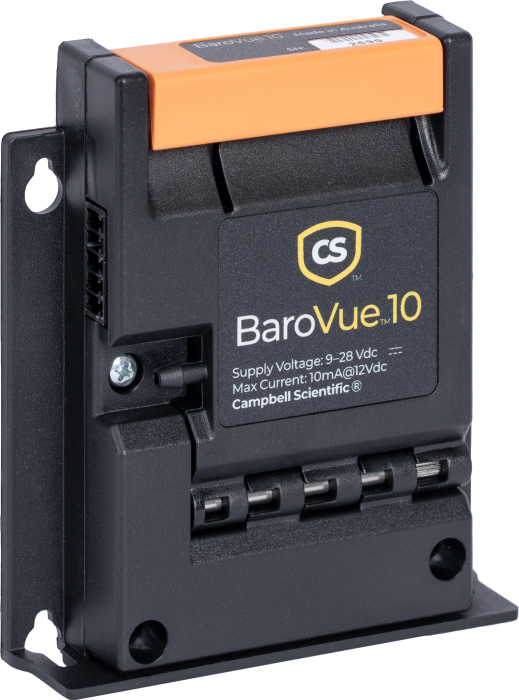










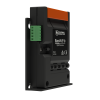
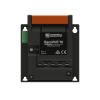
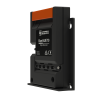
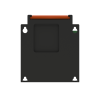
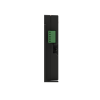
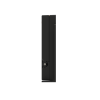
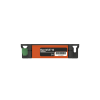

Detailed Description
The BaroVUE™10 is a low-power, digital barometer (-40 to +60°C) that provides best-in-class accuracy and stability (±0.1 hPa/yr) over the entire pressure and temperature range. It can run continuously and does not require power cycling unlike other products in this category. The digital output is both SDI-12 and RS-232, which reduces noise and measurement uncertainty compared with analog sensors, and makes the BaroVUE™10 compatible with all Campbell Scientific SDI-12 devices. Moreover, this barometric pressure sensor can be installed and integrated into many new and existing weather stations. The transducers used in the BaroVUE™10 are direct-to-digital sensors, and no reconversion takes place inside the barometer.
Similar Products
Compatibility
Please note: The following shows notable compatibility information. It is not a comprehensive list of all compatible products.
Data Loggers
| Compatible | Note | |
|---|---|---|
| Aspen10 | ||
| CR1000 (retired) | ||
| CR1000X (retired) | ||
| CR300 (retired) | ||
| CR3000 (retired) | ||
| CR310 | ||
| CR350 | ||
| CR6 | ||
| CR800 (retired) | ||
| CR850 (retired) |
Additional Compatibility Information
Specifications
| Pressure Range | 500 to 1100 hPa |
| Temperature Range | -40° to +60°C |
| Supply Voltage | 9 to 28 Vdc |
| Elevation | ~609.6 m (2,000 ft) below sea level (as in a mine) to 4,572 m (15,000 ft) above sea level |
| Current Consumption |
|
| Digital Output | SDI-12, RS-232 serial |
| Pressure Fitting | Barbed fitting for 0.318 cm (0.125 in.) |
| Dimensions | 2.2 x 9.0 x 10.2 cm (0.87 x 3.54 x 4.02 in.) |
| Weight | 226.8 g (0.5 lb) |
Accuracy |
|
| Calibration Uncertainty | ±0.15 hPa |
| Uncertainty | ±0.3 hPa (at 20°C) |
| Total Uncertainty | ±0.5 hPa (at -40° to +60°C) |
| Long-Term Stability | ±0.1 hPa/yr |
| Power Supply Rejection | Negligible |
| Measurement Noise | 0.05 hPa (RMS) |
| Resolution | 0.1 hPa |
Related Documents
Downloads
BaroVue10 Program Example (1 KB) 28-03-2023
Description: Includes an SDI-12 example and a RS-232-serial program example. The programs are written for a CR1000X, but programs for other data loggers will be similar.
The SDI-12 example uses the C1! command to retrieve data. The program also adjusts the barometric pressure measurement to sea level. The adjustment is entered as a constant, Elevation_m, at the beginning of the program. Initially, the Elevation_m value is 1382; change this value to your site elevation, in meters.
The serial program demonstrates using RS-232 mode to initiate and return measurements using the SerialOut(), SerialIn(), and SplitStr() CRBasic instructions.
FAQs for
Number of FAQs related to BaroVUE10: 11
Expand AllCollapse All
-
The BaroVue 10 can fit inside an ENC100. For more information, refer to the Specifications information on the ENC100 product page.
-
There is no warm-up time for the BaroVue 10.
-
In most cases, the enclosures or buildings where the BaroVue 10 is housed have enough ventilation for the pressure to stay at equilibrium with the ambient pressure. Therefore, the sensor does not need to be vented to the outside
However, if the sensor resides in an air-tight environment, and the pressure external to this environment needs to be measured, then the sensor will need to be vented to the outside. The preferred method for measuring the pressure external to the enclosure is to use a two-plate pressure port such as the RM Young 61002 to minimize dynamic pressure errors due to wind.
-
Yes, but only if certain conditions are met:
- The sensor must reside in a non-condensing environment.
- The vent tube accessing the high-humidity environment must be extremely well desiccated to keep any moisture from reaching the sensor’s components. Moisture in the sensor will damage the sensor, often to an un-repairable state.
-
Zero downtime/recalibration
The BaroVue 10 has been designed to allow for zero downtime recalibration during normal use. Other sensors on the market need to be taken offline and sent back to the manufacturer to be recalibrated, often for weeks at a time, resulting in loss of data and costing time and money.
In comparison, the sensor card of the BaroVue 10 is calibrated ahead of time and sent out to customers to replace the old sensor card, requiring only one trip to the field and no downtime.
Further to this, the design of the BaroVue 10 allows customers to remove and replace their sensor card quickly and easily without having to disassemble the equipment in the enclosure or having to send the product back to the manufacturer. There is no need to turn the device off to replace the card.
Highly reliable measurements
The BaroVue 10 sensor card employs multiple sensor cells with statistical analysis to produce an accurate, precise, and repeatable measurement as well as a data-quality metric. The customer can use this quality metric for tracking calibration cycles, planning, maintenance schedules, and detecting pre-fault conditions.
Low power
The BaroVue 10 is a low power device and can be kept running continuously. The BaroVue 10 does not require any power cycling, unlike other products in this category.
Very low noise
The BaroVue 10 uses direct-to-digital sensors, and no analog-to-digital reconversion takes place inside the barometer.
These factors, coupled with the multiple sensor cells, result in a reduction in noise when compared with analog sensors.
Campbell Scientific aesthetics and form
The BaroVue 10 has been designed with functionality in mind, and its aesthetic complements other Campbell Scientific products.
The BaroVue 10 can be mounted in the orientation that best suits the application and has a smaller backplane footprint than its competitors.
-
Campbell Scientific recommends calibration on a yearly basis. However, conformance to published standards or regulations may require this on a more frequent basis.
-
When using SDI-12 or RS-232 communication protocols, the pressure measurement can be returned in hPa, kPa, mmHg, inHg, or PSI. Refer to the BaroVue 10 manual for more information. If different measurement units are required, refer to a conversion chart.
-
Contact your local Campbell Scientific office to purchase a calibrated BaroVue 10 sensor card (BVC10). After you receive the calibrated card, swap it with your current card, and mail it back to your local Campbell Scientific office. In this way, only one trip to the field site is required, and there will be no downtime for the sensor.
-
While the measurement is equivalent, the BaroVue 10 is not a drop-in replacement. Unlike the CS100 and the CS106, the BaroVue 10 is a digital sensor that communicates either via SDI-12 or RS-232. To use the BaroVue 10 in a system that previously used a CS100/CS106, the wiring and program will need to be changed, as it is a digital sensor.
-
A CS106 Barometric Pressure Sensor can be added to the station. However, the sensor needs to be wired into the wiring terminal inside the enclosure, and the data logger program needs to be edited to include the instructions to poll the sensor and store the values.
Note: Some versions of the ET107 station that are interfaced with irrigation companies may have proprietary programs or complicated programs that are not easily changed.










